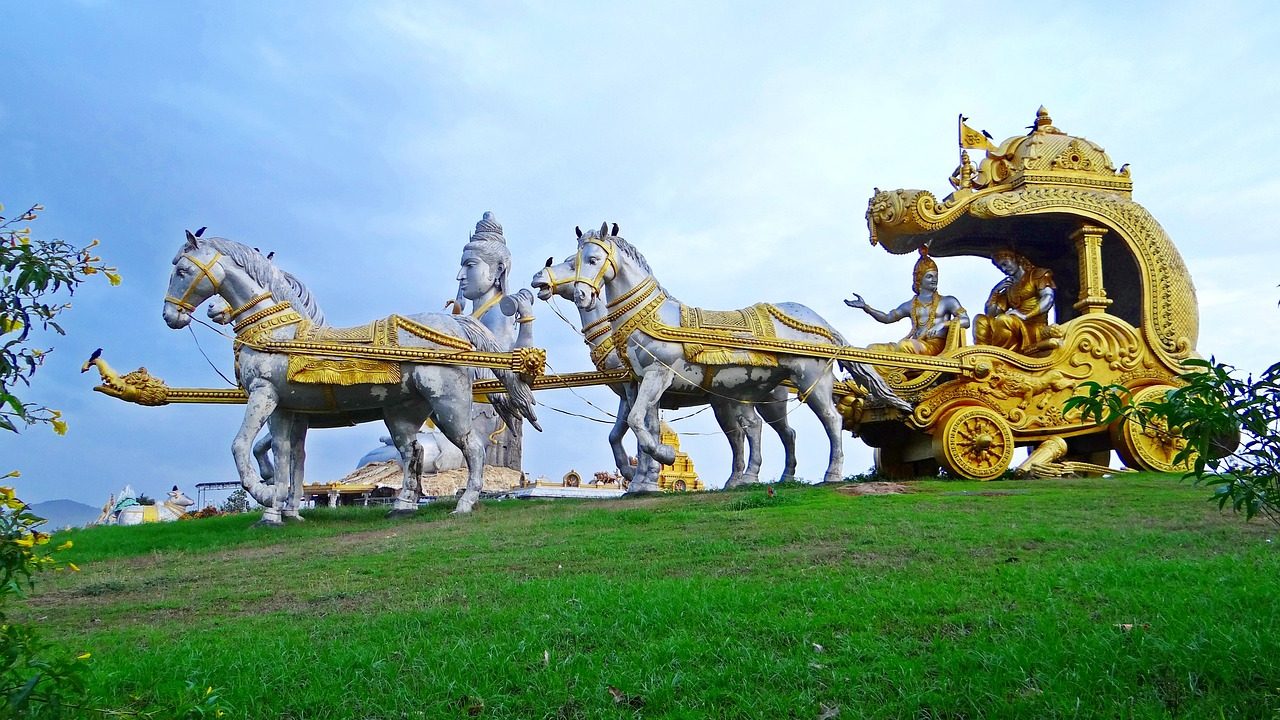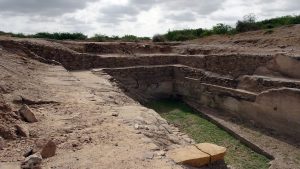The place of the Mahabharata war is located in the state of Haryana, India in “Kurukshetra”. There are many measures taken to prove that Mahabharata took place. There is also much archaeological evidence and common folklore that assures the reality of this epic. The archaeological survey to prove the reality of Mahabharata was conducted by B.B. Lal and his team. He was the director general of ASI, Archaeological Survey of India. B.B. Lal began his excavation in the capital city of Hastinapur, which is the capital of Kurukshetra.

Archaeological evidence: The first item to be found during the excavation in Hastinapur was a pottery item with fine grey paint and geometrical shapes drawn on its surface with black paint. It is known as Painted grey ware or PGW. The main aspects of “PGW culture” include the cultivation of crops like rice, wheat, sesame, millet etc. The domestication of cattle, sheep, and horses was common. The houses were built using mud or brick. The PGW sites were found in the ‘Ghaggar-Hakra civilization’ in present-day Himachal Pradesh, Punjab and Haryana. Similar kinds of sites were found in Hastinapur. Recently an excavation project was carried out in ‘Purana Qila’ in Delhi that unearthed PGW pottery. The PGW culture proves that there was a developed civilization existed in those days described in ancient texts. The presence of iron was also found near the Ganga civilization and in the foothills of the Himalayas and Vindhyachal ranges. This also proves how weapons and other essentials were made during the Mahabharata period. The excavations have also come across objects for daily use like- cooking, eating, storing, terracotta, glass bangles, iron nails mud houses of common people. Another famous archaeological evidence that contributes to the fact that Mahabharata is not a myth is that, the bloody soil of Kurukshetra. When the archaeologists were studying the battlefield, Kurukshetra they found that the soil is mixed with blood, and it is around the Mahabharata period.
Dwarka- the drowned kingdom: Dr. S.R. Rao’s excavations at Dwarka prove that the descriptions found in texts are all true. Dwarka is situated in the western part of Gujarat. Dwarka means “gateway to heaven”. It was found that the city contained 9,00,000 palaces constructed with crystals and silver. The city was well developed with roads and huge markets, temples walkways, gardens, and lakes. During 1980s the marine biologists discovered huge structures deep inside the sea. Then, a detailed excavation of the site took place by marine archaeologists. This city was described in the text of Mahabharata, it’s a point where the Gomati River joined the sea and it led to the submergence of the city. The archaeological evidence collected states that the city was built on six blocks and all the six blocks had huge walls decorated with crystals and other precious stones. The presence of a large anchor stone was also included in the evidence it showed overseas connections and trade via ships. It is also suggested that the city was connected to the mainland through bridges and ports as it was surrounded by water. Some artifacts and structures discovered in the place indicate that the city of Dwarka existed around nine thousand years ago and that the city was rebuilt seven times. The archaeologists believe that the city got submerged in 2000 BC due to heavy floods for a long period. This year coincides with the time when “Dwapara yug” came to an end including the time when Krishna died, as mentioned in the Mahabharata and other ancient texts.
AERTICE BY – MISHTI GADHVI | EDITED BY – SAHIL HARVANI



